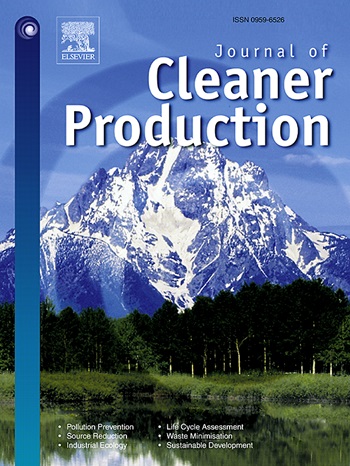Bioconversion of black soldier fly larvae on agricultural by-products: Study on growth, nutrition, physicochemical properties, metabolic profiling, and larvae-substrate component correlations
IF 9.7
1区 环境科学与生态学
Q1 ENGINEERING, ENVIRONMENTAL
引用次数: 0
Abstract
The efficient utilization of global agricultural by-products represents a critical challenge for sustainable development. Conventional methods face efficiency and environmental limitations, whereas black soldier fly larvae (BSFL) bioconversion technology offers superior conversion with lower emissions. However, current research emphasizes waste reduction but lacks evaluation of critical industrial parameters like larval physicochemical properties, bioactive compounds, and substrate-larvae compositional relationships, impeding precision nutrition. This research systematically evaluates the effects of various agricultural by-products on BSFL growth, nutrition, physicochemical properties, and metabolic profiles. For the first time, integrating metabolites to establish larvae-substrate correlations. Key findings demonstrate substrate-specific outcomes: Soybean meal maximized growth and bioconversion efficiency; cottonseed meal enhanced crude protein; distillers’ grains increased lipid accumulation; rapeseed and peanut meal improved antioxidant capacity. The fatty acid composition and physicochemical properties of BSFL oil were markedly substrate-dependent, with C12:0 exhibiting retention value exceeding 1,500, highlighting the efficient synthesis capacity of BSFL. Metabolic profiling revealed significant pathway alterations in BSFL, particularly in unsaturated fatty acid biosynthesis and ABC transporter enrichment. Correlation analysis identified nutritional indicators (including crude protein, crude fat), key fatty acids (including C18:1n9, C20:5n3, C22:6n3), and 1,137 metabolites that were strongly associated with substrate composition. Preliminary identification of substrate components potentially affecting these BSFL constituents has been achieved. This study provides a comprehensive evaluation framework for BSFL-based bioconversion, providing scientific evidence for precisely tailoring larval composition through substrate optimization, contributing to resource recovery from agricultural by-products and the development of a circular economy.


黑虻幼虫在农业副产品上的生物转化:生长、营养、理化特性、代谢特征和幼虫-基质成分相关性研究
有效利用全球农业副产品是可持续发展面临的重大挑战。传统方法面临效率和环境限制,而黑兵蝇幼虫(BSFL)生物转化技术具有低排放的优势。然而,目前的研究强调减少废物,但缺乏对关键工业参数的评估,如幼虫的理化性质、生物活性化合物和基质-幼虫的组成关系,阻碍了精确营养。本研究系统评价了各种农业副产品对BSFL生长、营养、理化性质和代谢特征的影响。首次整合代谢物来建立幼虫与底物的相关性。主要发现证明了底物特异性结果:豆粕最大化生长和生物转化效率;棉籽粕增强粗蛋白质;酒糟增加脂质积累;油菜籽和花生粕提高了抗氧化能力。BSFL油的脂肪酸组成和理化性质具有明显的底物依赖性,C12:0的保留值超过1500,表明BSFL的高效合成能力。代谢谱显示BSFL的显著通路改变,特别是不饱和脂肪酸的生物合成和ABC转运蛋白的富集。相关分析鉴定出营养指标(包括粗蛋白质、粗脂肪)、关键脂肪酸(包括C18:1n9、C20:5n3、C22:6n3)和1137种与底物组成密切相关的代谢物。初步鉴定了可能影响这些BSFL成分的底物成分。本研究为基于bsfl的生物转化提供了一个综合评价框架,为通过优化底物精确定制幼虫组成提供了科学依据,有助于农业副产品资源的回收和循环经济的发展。
本文章由计算机程序翻译,如有差异,请以英文原文为准。
求助全文
约1分钟内获得全文
求助全文
来源期刊

Journal of Cleaner Production
环境科学-工程:环境
CiteScore
20.40
自引率
9.00%
发文量
4720
审稿时长
111 days
期刊介绍:
The Journal of Cleaner Production is an international, transdisciplinary journal that addresses and discusses theoretical and practical Cleaner Production, Environmental, and Sustainability issues. It aims to help societies become more sustainable by focusing on the concept of 'Cleaner Production', which aims at preventing waste production and increasing efficiencies in energy, water, resources, and human capital use. The journal serves as a platform for corporations, governments, education institutions, regions, and societies to engage in discussions and research related to Cleaner Production, environmental, and sustainability practices.
 求助内容:
求助内容: 应助结果提醒方式:
应助结果提醒方式:


